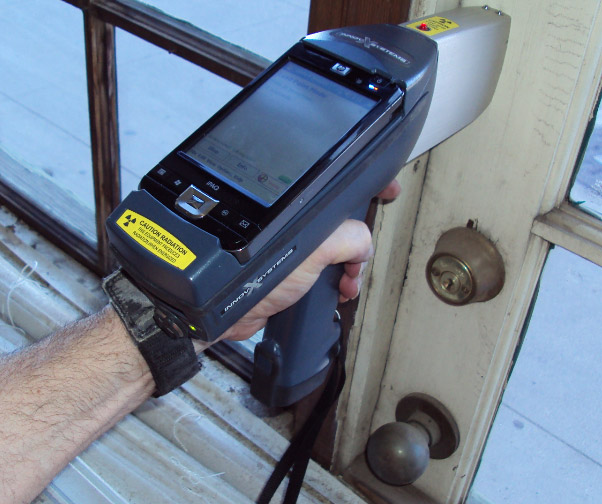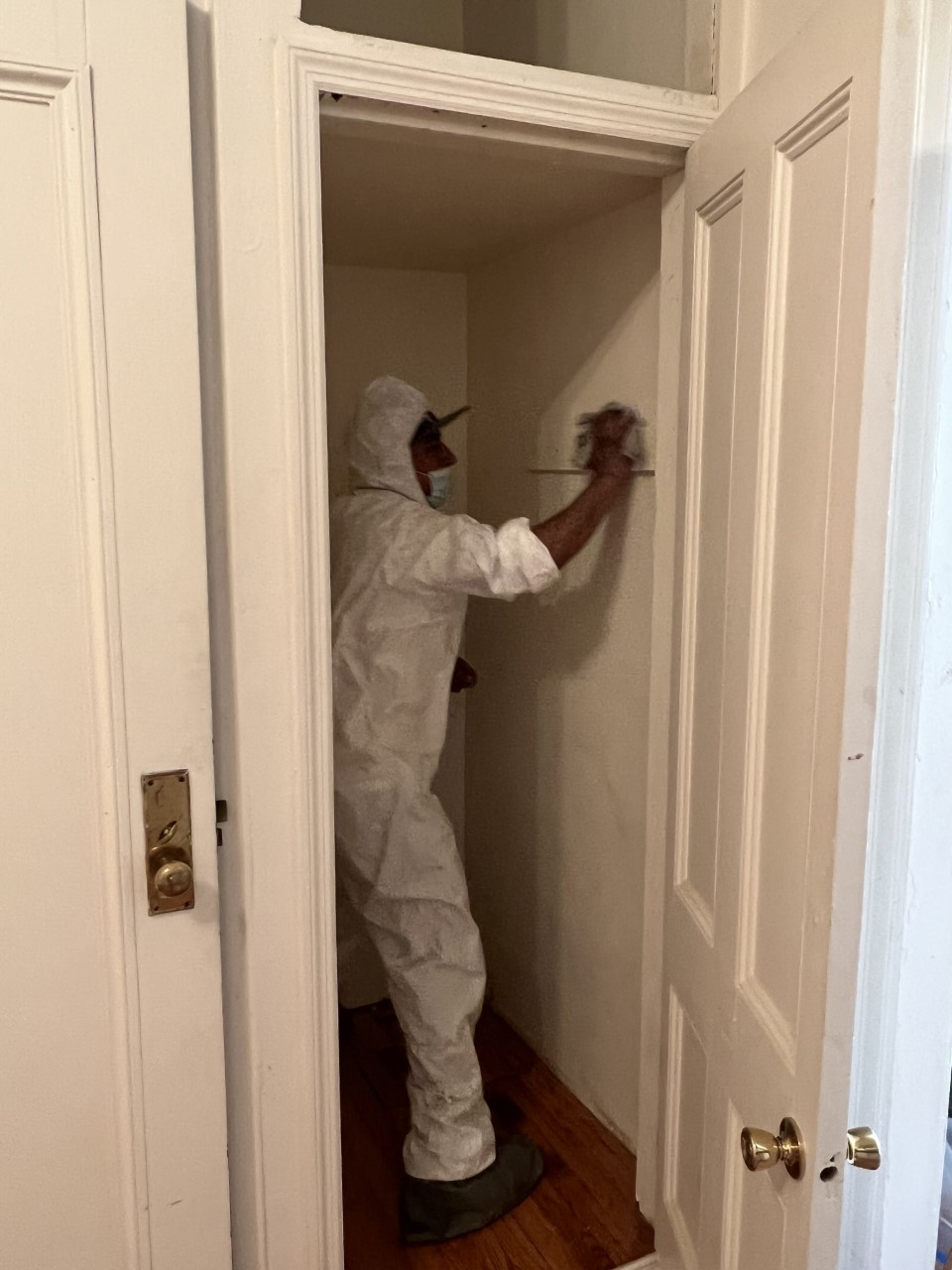Relied On Lead Paint Removal Company-- NYC's Premier Lead Reduction Service
Relied On Lead Paint Removal Company-- NYC's Premier Lead Reduction Service
Blog Article
Step-by-Step Process for Successful Lead Violation Removal
Dealing with lead violations demands a precise and organized technique to guarantee both safety and security and regulative compliance. The trip starts with the exact detection and evaluation of contamination sources, utilizing advanced analysis devices. Following this, adherence to federal and state laws is vital to formulating an effective remediation strategy. Such a plan should detail the details techniques and timelines for action. The real remediation requires proficient personnel to execute these plans while strictly following security protocols. What takes place after the removal is completed? The response lies in comprehending the vital post-remediation approaches that make sure long-term security and area wellness.

Detection and Evaluation
Discovery and assessment are crucial actions in the remediation of lead infractions. To make certain a reliable remediation procedure, it is vital to conduct an extensive assessment of the environment where potential lead direct exposure exists. The preliminary phase of discovery involves determining resources of lead contamination, which can be discovered in paint, pipes, dirt, and dust. Using advanced diagnostic tools such as X-ray fluorescence (XRF) analyzers and atomic absorption spectroscopy (AAS) can provide accurate measurements of lead concentrations.
This includes examining the extent and seriousness of contamination, as well as recognizing populations at risk, especially youngsters and expecting women. The collected information must be diligently documented to sustain the advancement of an efficient removal strategy.
Additionally, it is imperative to focus on locations with the highest degree of contamination and those that present the biggest health and wellness risks. Effective communication with stakeholders, including homeowner, locals, and public health and wellness authorities, is critical for guaranteeing that all celebrations are informed concerning the searchings for and the subsequent actions needed for remediation. This first detection and assessment phase lays the foundation for a successful lead violation removal procedure.

Lawful and Regulatory Compliance
Browsing the landscape of lawful and governing conformity is a critical element of successful lead offense removal. Compliance makes sure not only the safety and security of affected populations yet likewise the integrity and legal standing of the company liable for removal.
State and regional laws can vary, commonly enforcing extra obligations or more rigorous standards. Therefore, a comprehensive understanding of all appropriate lawful frameworks is important. This includes careful paperwork of all removal tasks to show compliance. Failure to adhere to these regulations can lead to serious penalties, including large penalties, legal action, and reputational damages.
Involving legal specialists focused on ecological regulation can help with navigating these intricacies. Regular training and certification for all workers associated with the removal process are likewise obligatory to guarantee adherence to security and regulatory requirements. By focusing on lawful and regulative compliance, organizations can properly alleviate dangers and achieve a successful remediation end result.
Planning the Removal
Successfully planning the remediation of lead offenses begins with a complete analysis of the polluted site. This data-driven approach ensures that remediation initiatives are suitably targeted and effective.
Once the contamination is mapped, a threat evaluation need to be carried out to assess potential health and wellness dangers to human beings and the environment. Lead Violation Removal in NYC. This analysis must consider aspects such as direct exposure paths, populace vulnerability, and environmental effects. The insights gathered will certainly develop the basis for choosing an ideal removal strategy
Consequently, setting clear, achievable purposes for the remediation project is crucial. These purposes need to align with governing requirements and stakeholder expectations to guarantee conformity and area approval. Creating a comprehensive remediation strategy that details approaches, timelines, and source appropriation will assist in an organized technique to the clean-up procedure.
Additionally, it is vital to involve with stakeholders early and preserve transparent interaction throughout the preparation phase. This consists of informing local communities, obtaining essential licenses, and coordinating with governing agencies to guarantee all legal and procedural demands are satisfied. A well-crafted removal plan not only attends to the contamination effectively but likewise develops depend on and collaboration amongst all events involved.
Carrying Out the Removal
With a well-structured removal strategy in place, the emphasis you can find out more changes to the actual execution of the removal tasks. This stage includes setting in motion the essential sources, consisting of competent personnel, specialized devices, and top notch materials. Begin by clearly defining duties and duties to ensure responsibility and seamless sychronisation among employee.
The first step in execution is to protect the site. This consists of establishing up control areas to avoid lead dust and debris from spreading, as well as using air filtration systems to maintain air top quality. Next off, continue with the elimination of lead-based materials. Make use of techniques such as wet scratching, chemical stripping, or encapsulation, depending upon the severity and area of the contamination. It is crucial to follow safety procedures, including using personal protective equipment (PPE) and appropriate disposal of hazardous products.
Throughout the remediation procedure, conduct periodic evaluations and air high quality checking to make sure conformity with governing criteria. Efficient communication with stakeholders, including homeowner and residents, is essential to keep them informed of development and any type of unexpected developments. By diligently adhering to these actions, the removal tasks can be implemented effectively and efficiently, inevitably mitigating lead threats.
Post-Remediation Techniques
Post-remediation techniques play an essential role in guaranteeing the long-term success of lead offense remediation efforts. These strategies encompass ongoing surveillance, maintenance, and community education and learning to avoid future lead exposure and view make certain a safe environment.
First, normal monitoring is crucial. This includes routine screening of the formerly impacted locations to guarantee that lead degrees remain within secure limits. Residential property proprietors should establish a timetable for these tests, ideally in cooperation with licensed environmental specialists.

Third, educating the neighborhood plays a crucial function in sustaining the advantages of remediation. Residents and residential property my site supervisors ought to be educated about the dangers of lead exposure and the most effective techniques for preserving a lead-safe setting. Workshops, educational pamphlets, and area meetings can be effective tools for disseminating this info.
Final Thought
Successful lead offense removal needs a thorough, systematic method encompassing detection and analysis of contamination, adherence to lawful and regulative standards, careful planning, and reliable implementation of remediation efforts. Post-remediation strategies, including constant tracking and community education and learning, are necessary to sustain a lead-safe environment. Collaboration with ecological experts ensures continuous conformity and security of public health and wellness. This systematic procedure highlights the importance of thoroughness and caution in attending to and alleviating lead contamination.
Report this page